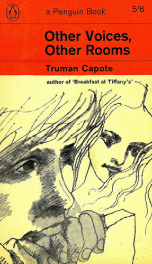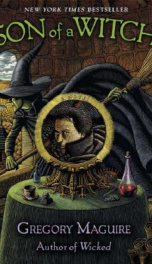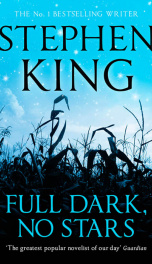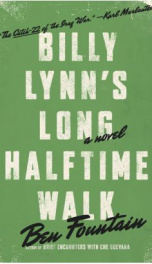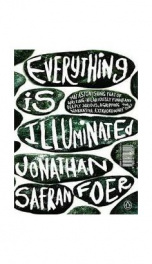Vonnegut Kurt

Kurt Vonnegut, Jr. (November 11, 1922 – April 11, 2007; pronounced /ˈvɒnɨɡət/) was an American novelist who wrote works blending satire, black comedy, and science fiction, such as Slaughterhouse-Five (1969), Cat's Cradle (1963), and Breakfast of Champions (1973).[2] He was known for his humanist beliefs as well as being honorary president of the American Humanist Association. Kurt Vonnegut was born to fifth-generation German-American parents (Kurt Vonnegut, Sr., and Edith née Lieber), son and grandson in the Indianapolis firm Vonnegut & Bohn.[3] He attended Cornell University, where he served as assistant managing editor and associate editor for the student newspaper, the Cornell Daily Sun, and majored in chemistry.[4] While attending Cornell, he was a member of the Delta Upsilon Fraternity, following in the footsteps of his father. While at Cornell, Vonnegut enlisted in the U.S. Army.[5] The army sent him to the Carnegie Institute of Technology and the University of Tennessee to study mechanical engineering.[2] On May 14, 1944, Mothers' Day, his mother committed suicide.[6] Kurt Vonnegut's experience as a soldier and prisoner of war had a profound influence on his later work. As a private with the 106th Infantry Division, Vonnegut, along with five other battalion scouts, wandered behind enemy lines for several days during the Rhineland Campaign. They were cut off from their battalion and captured by Wehrmacht troops on December 14, 1944.[7] Imprisoned in Dresden, Vonnegut was chosen as a leader of the POWs because he spoke some German. After insulting some German soldiers that were guarding him he was beaten and had his position as leader taken away.[8] While a prisoner, he witnessed the fire bombing of Dresden in February 1945 which destroyed most of the city. Vonnegut was one of a group of American prisoners of war to survive the attack in an underground slaughterhouse meat locker used by the Germans as an ad hoc detention facility. The Germans called the building Schlachthof Fünf (Slaughterhouse Five) which the Allied POWs adopted as the name for their prison. Vonnegut said the aftermath of the attack was "utter destruction" and "carnage unfathomable." This experience was the inspiration for his famous novel, Slaughterhouse-Five, and is a central theme in at least six of his other books. In Slaughterhouse-Five he recalls that the remains of the city resembled the surface of the moon, and that the Germans put the surviving POWs to work, breaking into basements and bomb shelters to gather bodies for mass burial, while German civilians cursed and threw rocks at them.[8] Vonnegut eventually remarked, "There were too many corpses to bury. So instead the Germans sent in troops with flamethrowers. All these civilians' remains were burned to ashes."[9] Vonnegut was repatriated by Red Army troops in May 1945 at the Saxony-Czechoslovakian border.[8] Upon returning to America, he was awarded a Purple Heart for what he called a "ludicrously negligible wound,"[10] later writing in Timequake that he was given the decoration after suffering a case of "frostbite".[11] After the war, Vonnegut attended the University of Chicago as a graduate student in anthropology and also worked at the City News Bureau of Chicago. Vonnegut admitted that he was a poor anthropology student, with one professor remarking that some of the students were going to be professional anthropologists and he was not one of them. According to Vonnegut in Bagombo Snuff Box, the university rejected his first thesis on the necessity of accounting for the similarities between Cubist painters and the leaders of late 19th Century Native American uprisings, saying it was "unprofessional." He left Chicago to work in Schenectady, New York, in public relations for General Electric, where his brother Bernard worked in the research department. The University of Chicago later accepted his novel Cat's Cradle as his thesis, citing its anthropological content, and awarded him the M.A. degree in 1971.[12][13] In the mid 1950s, Vonnegut worked very briefly for Sports Illustrated magazine, where he was assigned to write a piece on a racehorse that had jumped a fence and attempted to run away. After staring at the blank piece of paper on his typewriter all morning, he typed, "The horse jumped over the fucking fence," and left.[14] On the verge of abandoning writing, Vonnegut was offered a teaching job at the University of Iowa Writers' Workshop. While he was there, Cat's Cradle became a best-seller, and he began Slaughterhouse-Five, now considered one of the best American novels of the 20th century, appearing on the 100 best lists of Time magazine[15] and the Modern Library.[16] Early in his adult life he moved to Barnstable, Massachusetts, a town on Cape Cod,[17] where he managed the first Saab dealership established in the U.S.[18] The author's name appears in print as "Kurt Vonnegut, Jr." throughout the first half of his published writing career; beginning with the 1976 publication of Slapstick, he dropped the "Jr." and was simply billed as Kurt Vonnegut. His older brother, Bernard Vonnegut, was an atmospheric scientist at the University at Albany, SUNY, who discovered that silver iodide could be used for cloud seeding, the process of artificially stimulating precipitation. After returning from World War II, Kurt Vonnegut married his childhood sweetheart, Jane Marie Cox, writing about their courtship in several of his short stories. The couple separated in 1970. He did not divorce Cox until 1979, but from 1970 Vonnegut lived with the woman who would later become his second wife, photographer Jill Krementz.[2] Krementz and Vonnegut were married after the divorce from Cox was finalized. He raised seven children: three with his first wife, three more born to his sister Alice and adopted by Vonnegut after she died of cancer, and a seventh, Lily, adopted with Krementz. Two of these children have published books, including his only biological son, Mark Vonnegut, who wrote The Eden Express: A Memoir of Insanity, about his experiences in the late 1960s and his major psychotic breakdown and recovery; the tendency to insanity he acknowledged may be partly hereditary, influencing him to take up the study of medicine and Orthomolecular medicine, which he later disavowed. Mark was named after Mark Twain, whom Vonnegut considered an American Saint.[19] His daughter Edith ("Edie"), an artist, was named after Kurt Vonnegut's mother, Edith Lieber. During her youth, she was an acquaintance of Cape Cod murderer Tony Costa. She has had her work published in a book titled Domestic Goddesses and was once married to Geraldo Rivera. His youngest daughter, Nanette ("Nanny"), was named after Nanette Schnull, Vonnegut's paternal grandmother. She is married to realist painter Scott Prior and is the subject of several of his paintings, notably "Nanny and Rose". Of Vonnegut's four adopted children, three are his nephews: James, Steven, and Kurt Adams; the fourth is Lily, a girl he adopted as an infant in 1982. James, Steven, and Kurt were adopted after a traumatic week in 1958, in which their father James Carmalt Adams was killed on September 15 in the Newark Bay rail crash when his commuter train went off the open Newark Bay bridge in New Jersey, and their mother—Kurt's sister Alice—died of cancer. In Slapstick, Vonnegut recounts that Alice's husband died two days before Alice herself, and her family tried to hide the knowledge from her, but she found out when an ambulatory patient gave her a copy of the New York Daily News a day before she herself died. The fourth and youngest of the boys, Peter Nice, went to live with a first cousin of their father in Birmingham, Alabama as an infant. Lily is a singer and actress. On November 11, 1999, the asteroid 25399 Vonnegut was named in Vonnegut's honor.[20] On January 31, 2001, a fire destroyed the top story of his home. Vonnegut suffered smoke inhalation and was hospitalized in critical condition for four days. He survived, but his personal archives were destroyed. After leaving the hospital, he recuperated in Northampton, Massachusetts. Vonnegut smoked unfiltered Pall Mall cigarettes, a habit he referred to as a "classy way to commit suicide".[21] Vonnegut died on April 11, 2007, in Manhattan, following a fall at his Manhattan home several weeks earlier which resulted in irreversible brain injuries.[2][22][23] Vonnegut's first short story, "Report on the Barnhouse Effect" appeared in the February 11, 1950 edition of Collier's (it has since been reprinted in his short story collection, Welcome to the Monkey House). His first novel was the dystopian novel Player Piano (1952), in which human workers have been largely replaced by machines. He continued to write short stories before his second novel, The Sirens of Titan, was published in 1959.[27] Through the 1960s, the form of his work changed, from the relatively orthodox structure of Cat's Cradle (which in 1971 earned him a Master's Degree) to the acclaimed, semi-autobiographical Slaughterhouse-Five, given a more experimental structure by using time travel as a plot device. These structural experiments were continued in Breakfast of Champions (1973), which included many rough illustrations, lengthy non-sequiturs and an appearance by the author himself, as a deus ex machina. Deadeye Dick, although mostly set in the mid-twentieth century, foreshadows the turbulent times of contemporary America; it ends prophetically with the lines "You want to know something? We are still in the Dark Ages. The Dark Ages — they haven't ended yet." The novel explores themes of social isolation and alienation that are particularly relevant in the postmodern world. Society is seen as openly hostile or indifferent at best, and popular culture as superficial and excessively materialistic. Vonnegut attempted suicide in 1984 and later wrote about this in several essays.[28] Breakfast of Champions became one of his best-selling novels. It includes, in addition to the author himself, several of Vonnegut's recurring characters. One of them, science fiction author Kilgore Trout, plays a major role and interacts with the author's character.
do you like this author?
What readers are saying
What do you think? Write your own comment on this book!
write a commentWhat readers are saying
What do you think? Write your own comment on this author!
write a commentBook list
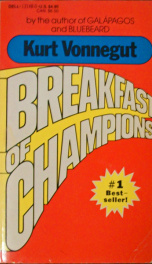
Breakfast of Champions
Series:
Unknown
Year:
Unknown
Raiting:
3/5
Narration provides the gateway to a fictional world; it gives sight and detail to a story’s reality. Narration can take many forms but there are two prevalent ones. There’s the first-person, where a narrative is communicated via a character ensconced within it. Then there’s the omniscient watcher of events; objectivity embodied in prose. Kurt Vonnegut offers an unusual synthesis of these two perspectives in his novel Breakfast of Champions.
Show more
add to favoritesadd In favorites

2 B R 0 2 B
Series:
Unknown
Year:
Unknown
Raiting:
3/5
Kurt Vonnegut, Jr. (1922-2007) was a prolific and genre-bending American novelist known for works blending satire, black comedy and science fiction, such as Slaughterhouse-Five (1969), Cat's Cradle (1963), and Breakfast of Champions (1973). He was also known for his humanist beliefs and being honorary president of the American Humanist Association. His short work, "2 B R 0 2 B," is a genre science fiction tale originally published in the magazine "Worlds of If" in 1962.
Show more
add to favoritesadd In favorites
Book list

Breakfast of Champions
Series:
Unknown
Year:
Unknown
Raiting:
3/5
Narration provides the gateway to a fictional world; it gives sight and detail to a story’s reality. Narration can take many forms but there are two prevalent ones. There’s the first-person, where a narrative is communicated via a character ensconced within it. Then there’s the omniscient watcher of events; objectivity embodied in prose. Kurt Vonnegut offers an unusual synthesis of these two perspectives in his novel Breakfast of Champions.
Show more
add to favoritesadd In favorites

2 B R 0 2 B
Series:
Unknown
Year:
Unknown
Raiting:
3/5
Kurt Vonnegut, Jr. (1922-2007) was a prolific and genre-bending American novelist known for works blending satire, black comedy and science fiction, such as Slaughterhouse-Five (1969), Cat's Cradle (1963), and Breakfast of Champions (1973). He was also known for his humanist beliefs and being honorary president of the American Humanist Association. His short work, "2 B R 0 2 B," is a genre science fiction tale originally published in the magazine "Worlds of If" in 1962.
Show more
add to favoritesadd In favorites
What readers are saying
What do you think? Write your own comment on this author!
write a commentif you like Vonnegut Kurt try:
readers also enjoyed
What readers are saying
What do you think? Write your own comment on this author!
write a commentGenre
if you like Vonnegut Kurt try:
readers also enjoyed
Do you want to read a book that interests you? It’s EASY!
Create an account and send a request for reading to other users on the Webpage of the book!



